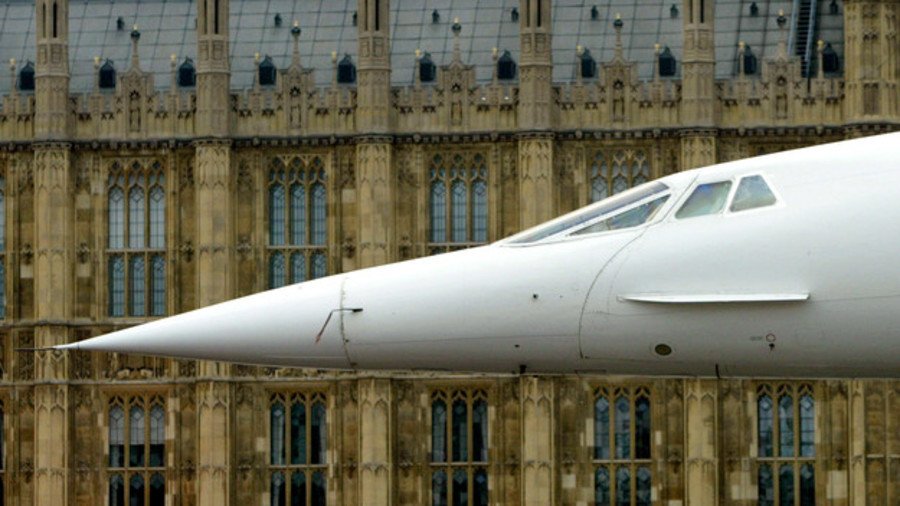Breaking the sound barrier: How air travel’s supersonic ambition is coming back

Fifteen years after supersonic passenger jet Concorde was grounded for the final time the race to break the sound barrier is gaining renewed momentum.
As NASA reveals plans for testing its X-plane, a quiet supersonic aircraft, and commercial airliners aim for a revival of super-fast passenger jet travel, RT looks back at the rise, fall and return of supersonic transport.
Imagine this: traveling safely at the speed of sound, getting to your destination faster & flying with significantly less noise. Our @NASAAero innovators are creating an experimental aircraft that could make supersonic flight over land possible. Learn more https://t.co/IbPICaeEJnpic.twitter.com/t3pMbTQLD7
— NASA (@NASA) April 3, 2018
Cold War race to build the world's first supersonic jet
The 1960s saw several nations strive to develop supersonic airliners – with projects in the works in the US, the Soviet Union and a joint endeavor by French and British governments which ultimately led to the creation of the Concorde.
The Soviet Union was the first to launch a supersonic flight with the Soviet Tupolev Tu-144 in June 1969 – three months ahead of Concorde. The plane, however, crashed at the Paris Air Show in 1973, which, paired with out-of-control maintenance costs, led to its discontinuation after just 55 scheduled passenger flights. The Tu-144’s production officially ended in 1982.
49 years ago first flight Tupolev Tu-144 Soviet supersonic transport aircraft, two months before the Concorde. Later fitted with two small retractable surfaces called Moustache canard, just behind the cockpit that increased lift at low speeds. First supersonic passenger aircraft. pic.twitter.com/FNer16SS2e
— FAST Museum ✈ (@FASTmuseum) December 31, 2017
Flight of the Concorde
Meanwhile, the Concorde took flight in October 1969 with a maximum speed of more than twice the speed of sound. It entered service in 1976 and continued flying for the next 27 years, taking people from London to New York in less than 3 and a half hours.
The project was developed under an Anglo-French treaty with a total program cost estimated at $1.3 billion. The standard cost of a one-way ticket from London to New York was £4,350 and up to £8,292 for a return. In July 2000, an Air France Concorde crashed shortly after taking off and killed 113 people. The accident decreased the demand for supersonic flights. In 2003, the Concorde flew for the last time, putting on commercial supersonic travel on pause.

The World’s fastest plane – SR-71 Blackbird
The SR-71 Blackbird holds the record for the fastest manned aircraft of all-time. The Lockheed reconnaissance aircraft operated by the US Air Force was capable of reaching speeds over Mach 3. The Mach number is the ratio of the speed of the aircraft to the speed of sound. Flights faster than Mach 1, and up to Mach 5, are deemed supersonic.
Only 32 such planes were ever made and were in service from 1964 to 1998. High-operating costs led to the Blackbird’s early retirement.
However, according to Lockheed Martin a hypersonic successor is in the pipeline. Hypersonic speeds generally refer to speeds of over Mach 5. SR-72 aims to reach speeds of Mach 6 and is envisioned as an unmanned aircraft.
Affordable reboots?
Since 1973, the Federal Aviation Administration (FAA) has banned civilian aircraft from flying faster than sound over land, however, these legal restrictions are currently up for renegotiation.
It comes as US start-up Boom Supersonic aims to become a viable successor to Concorde, hoping for commercial entry by 2023. The company is developing a 55-seat plane which it claims will be able to more than half the flight time from San Francisco to Washington DC to just two-and-a-half hours.
Earlier this year China revealed plans for a hypersonic flight that researchers claimed could travel anywhere in the world in less than three hours. The hypersonic project has been developed for the Chinese military but could be used for passengers in the future.
READ MORE: Bring back the biplane? Chinese researchers eye old design for hypersonic flight
Like this story? Share it with a friend!















